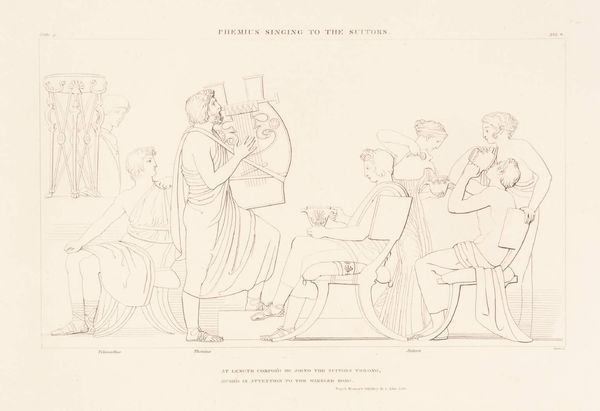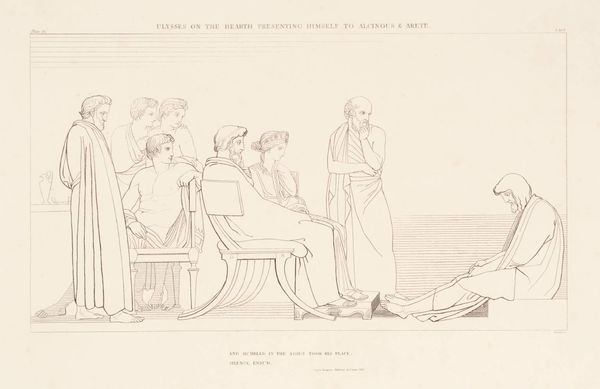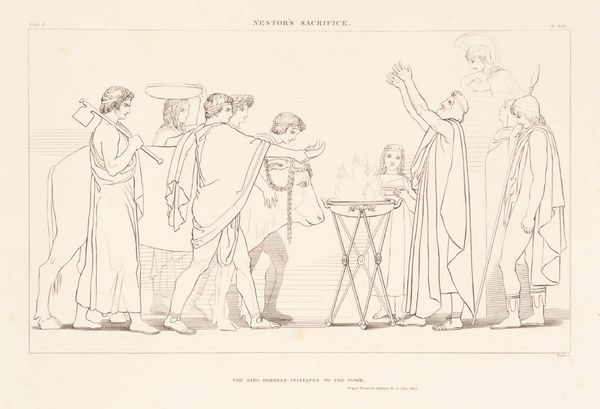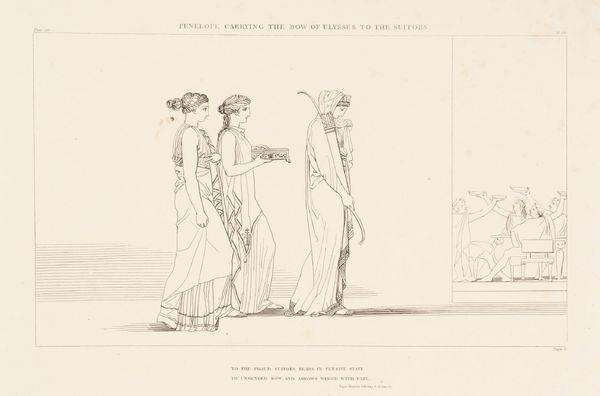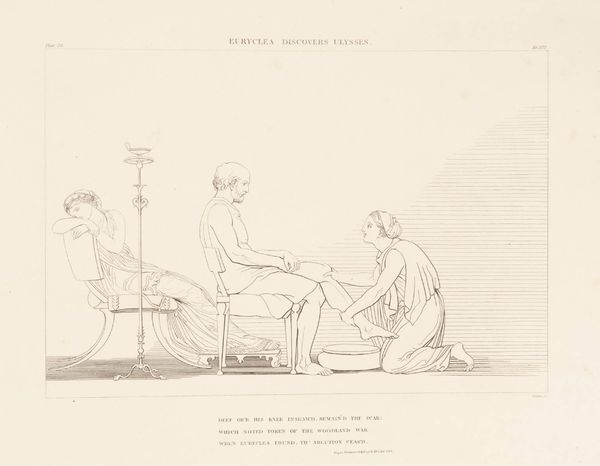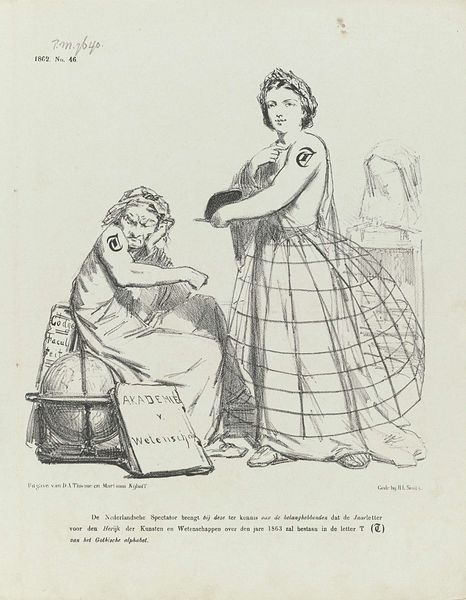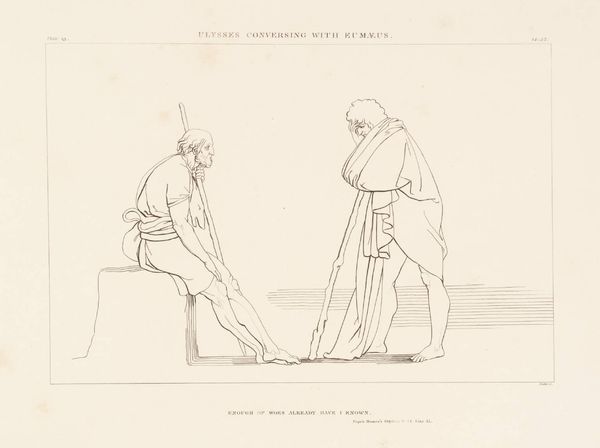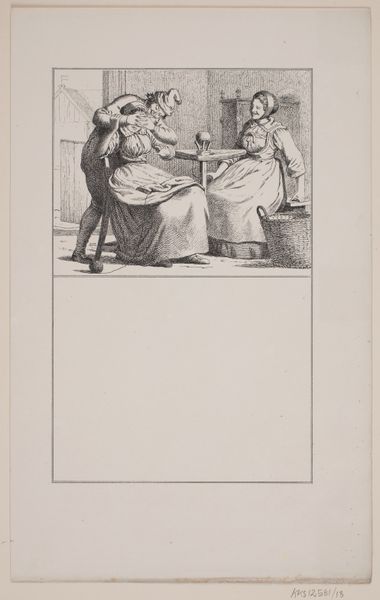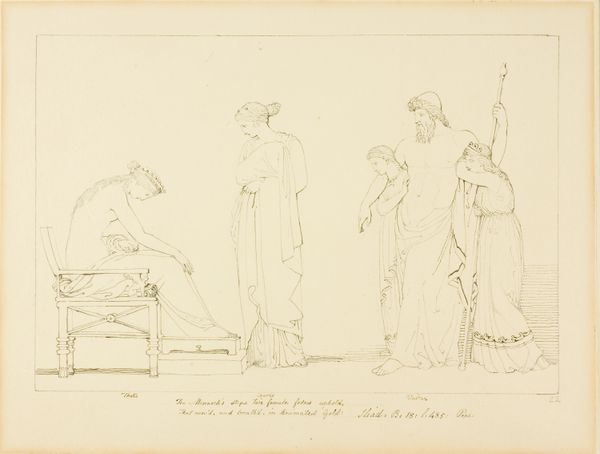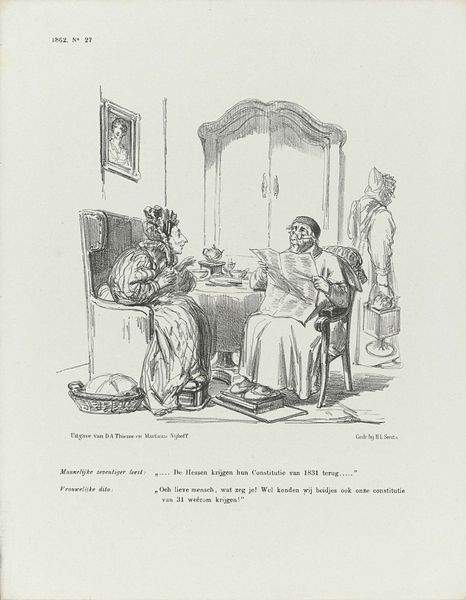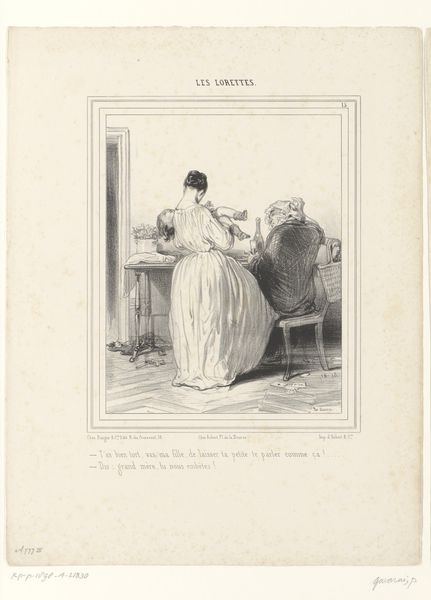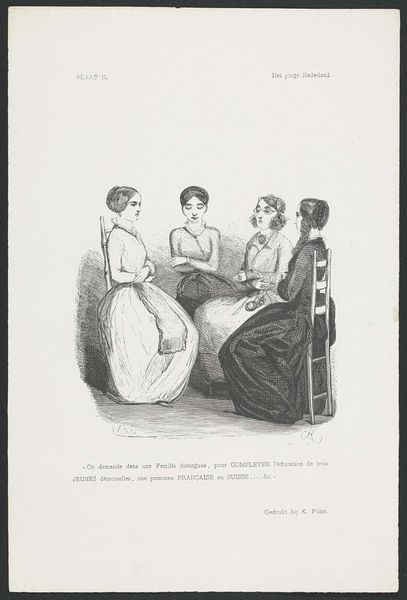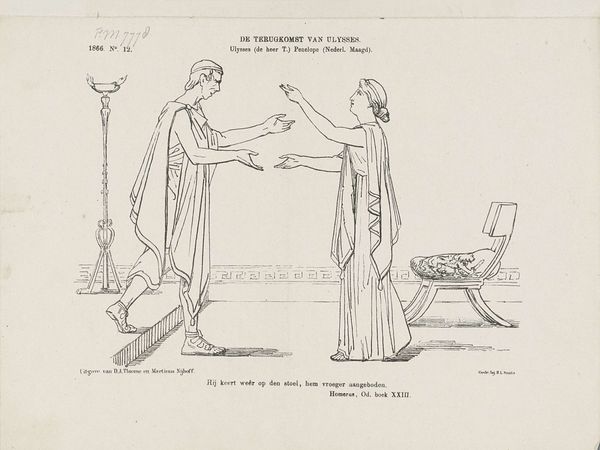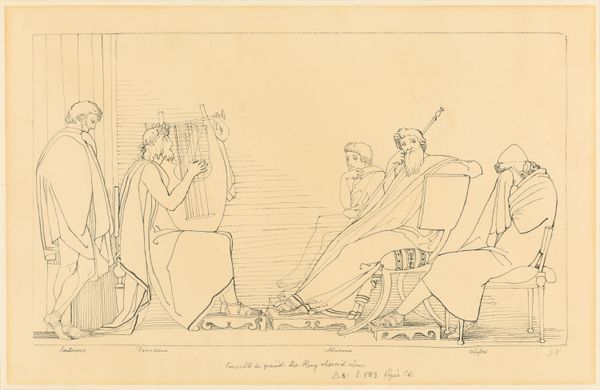
The Iliad of Homer, The Odyssey of Homer, Compositions from The Tragedies of Aeschylus, and The Theogony, Works and Days of Hesiod 1795 - 1817
0:00
0:00
drawing, print, engraving
#
drawing
#
narrative-art
#
neoclassicism
# print
#
greek-and-roman-art
#
figuration
#
line
#
history-painting
#
engraving
Dimensions: Book: 11 3/16 × 17 5/8 × 2 5/16 in. (28.4 × 44.7 × 5.8 cm) Plate: 7 11/16 x 10 1/4 in. (19.5 x 26.1 cm)
Copyright: Public Domain
Curator: Looking at John Flaxman’s series of engravings from 1795 to 1817 illustrating Homer, Aeschylus, and Hesiod, one is struck by the linearity and simplicity. Editor: My first impression is that these figures, especially in this plate showing Ulysses at the table of Circe, appear strikingly detached, almost floating in a silent space despite being a narrative scene. Curator: Precisely. Flaxman’s process involved stripping down the compositions to their most essential lines, reflecting the Neoclassical emphasis on form and ideal beauty. These engravings were, in a sense, mass-produced; this allowed for wider consumption and dissemination of classical narratives, reaching audiences beyond the elite. How do you interpret that silence? Editor: I see the silence as heavy with the weight of the choices characters have to make within these ancient myths. Ulysses looks deeply troubled here. Flaxman captures his psychological turmoil so economically, making me think about themes of gender, power and isolation present within the narrative. The social isolation experienced by both Ulysses and Circe is quite noticeable. Curator: It’s fascinating how the medium—engraving—a relatively accessible printing method at the time, contributed to shaping a visual culture steeped in classical narratives. Consider the labor involved in creating these detailed line drawings and transferring them to plates for reproduction; this speaks volumes about the dedication to classical ideals present during this era. Flaxman and other printmakers embraced engraving as an essential tool in the transmission of knowledge during the late 18th and early 19th centuries. Editor: And within those narrative choices lies so much unspoken social commentary. We should think critically about how these classical stories intersect with themes of colonialism, empire, and even early formations of modern European identity. The simplicity allows us, as contemporary viewers, to see these figures in our reflection. Curator: So, while Flaxman’s austere line might appear detached, it opened doors to exploring shared artistic ideals on a much larger scale. It democratized art making and viewing, which I find truly noteworthy. Editor: It is an invitation to consider how we understand ourselves within a continuum of shared cultural narratives. Definitely food for thought.
Comments
No comments
Be the first to comment and join the conversation on the ultimate creative platform.
